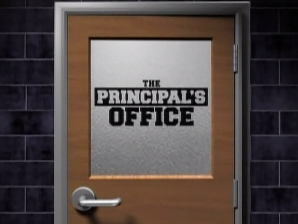Guest Editorial: The dangers of plastics
Chem students conclude recycling is key
From left, Kaitly Loja, Chelsea Ribeiro and Kimaly Nguyen write about the dangers of plastics in the environment. They are in Michelle McCabe’s chemistry class.
May 9, 2016
Editor’s Note: Michelle McCabe’s chemistry class has written position papers on contemporary environmental problems all year. Previously, the class wrote about the drinking water controversy in Flint, Mich. This article is on the dangers posed to the environment by plastics.
In a world where everyone depends on all the little objects, there came plastics. The era of recycling plastics benefits mankind.
Now think of the three R’s: Reducing plastics will allow us to reduce the risk plastic poses through their combinations of chemicals. Reuse of plastics implies a lower percentage of the products affecting the ecosystem. Recycling makes us feel victorious through conserving the certain resources we use daily. The true objective of recycling is to recover used plastics and be able to reprocess them back into other profitable products.
Some of the pros of plastics are convenience and versatility. Many items in our everyday life consist of plastic, such as water bottles, phones, grocery bags, containers, and cups.
A major con of using plastics is the environmental cost. When plastics are not correctly disposed of, such as throwing plastics on the ground or in the water, it then pollutes the earth and harms the environment.
When plastics are thrown on the ground they will most likely end up in waterways such as lakes, rivers and oceans, and the plastics end up harming and killing marine creatures.
In addition, plastics can produce human hazards. Several chemicals are usually added to plastics to improve its function. These chemicals are not always tested for their toxicity. Bioplastics
Bioplastics can be both positive and negative. For example, bioplastics are positive because they are derived from biomass sources.This means that they are made from renewable products such as vegetable starches.
Bioplastics are also positive because they can be reused multiple times. For instance, bioplastic utensils are durable so they can be reused. However, bioplastics are not as durable as regular plastics and are sensitive to water and heat. When bioplastics are exposed to water, the result is disheartening.
Furthermore, bioplastics have the capability of degrading under compostable conditions, which can alleviate the problem of creating and disposing garbage.
Through independent studies, class discussions and labs, we have been able to learn about the different uses for bioplastics.
We had first started the unit with discussing the dangers of fossil fuel.
By generating ideas on how to conserve our fossil fuel and prevent global warming, the class was able to identify and understand the importance of bioplastics in our world.
One lab in particular that was performed was creating a cleaning product by reusing bioplastics created by the class in the week prior. This lab included a complex procedure with many different steps.
But in the end, each group was able to make their own cleaning product and realize how significant bioplastics can be on our modern world. Overall, the world has the strength to transfigure the abundance of plastic into a surplus of necessary valuable materials.




















